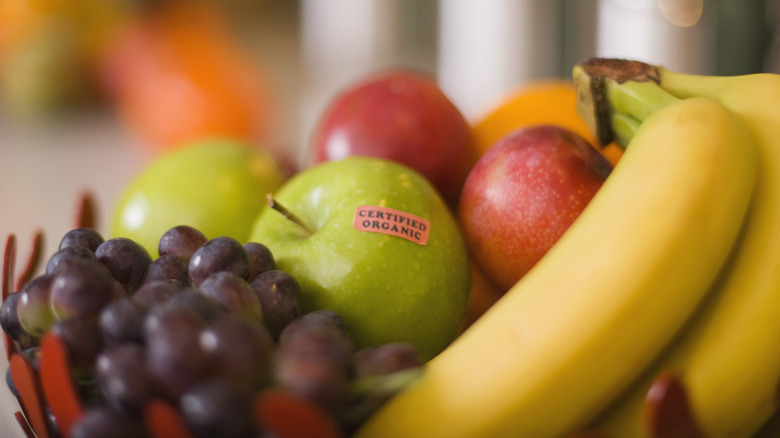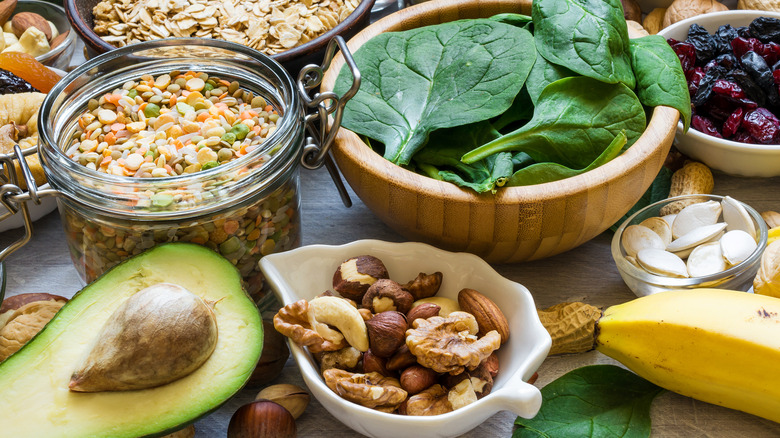When You Stop Eating Fruit, This Is What Happens To Your Blood Pressure
Fruits and vegetables should take up half of your plate if you're looking to eat healthy. Sure, you can drink your fruits in juices, but you'll miss out on some of the necessary fiber that helps digestion and keeps your blood sugar from spiking. Substituting fruit for your favorite sugary baked goods means you'll satisfy your sweet tooth while keeping under your calorie goals. Fruit also has vitamin C and other antioxidants that fight free radicals to prevent chronic diseases such as heart disease and some cancers.
Some people can't eat some types of fruit because they can't digest fructose, which is the naturally occurring sugar in fruit. Yet people might avoid fruit because of its high sugar content, even though Medical News Today says your body processes these natural sugars differently from table sugar. Low-carb diets might avoid fruit or limit it for the first phase because of fruit's high sugar and carb content. When you don't eat fruit, you'll miss out on the potassium that can manage your blood pressure.
Eating fruit every day reduces blood pressure
When you eat a lot of processed food, you're probably going to eat more sodium than you need. The Food and Drug Administration says the average American gets 3,400 milligrams of sodium every day, which is 1,100 milligrams more than the recommended limit. It's sodium that can raise your blood pressure. That's where potassium comes in. Potassium works to lower your blood pressure and weakens the effects of sodium. Fruits like apricots, melons, and bananas are good sources of potassium.
A 2016 study in the New England Journal of Medicine tracked the diets of more than half a million people over several years. Less than one in five of those people said they ate fresh fruit every day. People who ate fresh fruit like an apple every day had on average 4 points lower systolic blood pressure compared to people who never or rarely ate fruit. They also had lower glucose levels. Eating fresh fruit every day also reduced their risk of cardiovascular death by 40%, and their risk of major coronary events, ischemic stroke, and hemorrhagic stroke lowered by 34%, 25%, and 36%, respectively.
Add potassium to your diet
It's not that dropping fruit out of your diet will increase your blood pressure, especially if you replace fruit with vegetables. Vegetables are also high in potassium. A cup of cooked yam provides 911 milligrams of this mineral, and you'll get 839 milligrams in a cup of spinach. Cooked butternut squash, plantains, and portabella mushrooms are also good potassium sources. If you just don't like fruits and vegetables, be sure to add lima beans, adzuki beans, or white beans to your plate. Yogurt and some types of fish also have potassium.
It shouldn't be a surprise that most of these foods are included in the DASH (Dietary Approaches to Stop Hypertension) eating plan. The eating plan emphasizes foods rich in potassium, calcium, magnesium, and fiber while limiting sodium to 2,300 milligrams a day or less. A 2020 meta-analysis in Advances in Nutrition found that the DASH diet significantly reduces systolic and diastolic blood pressure compared to a control diet. It suggests four to five servings of fruit a day, which should give you an idea of fruit's effect on blood pressure.



